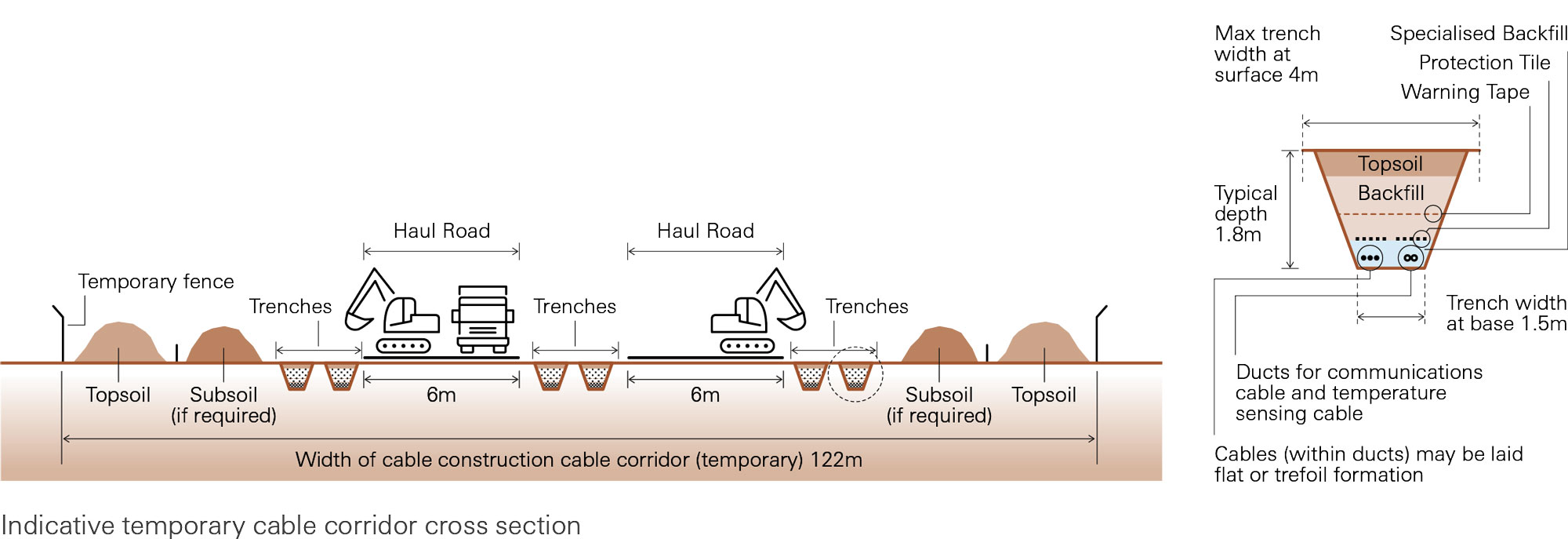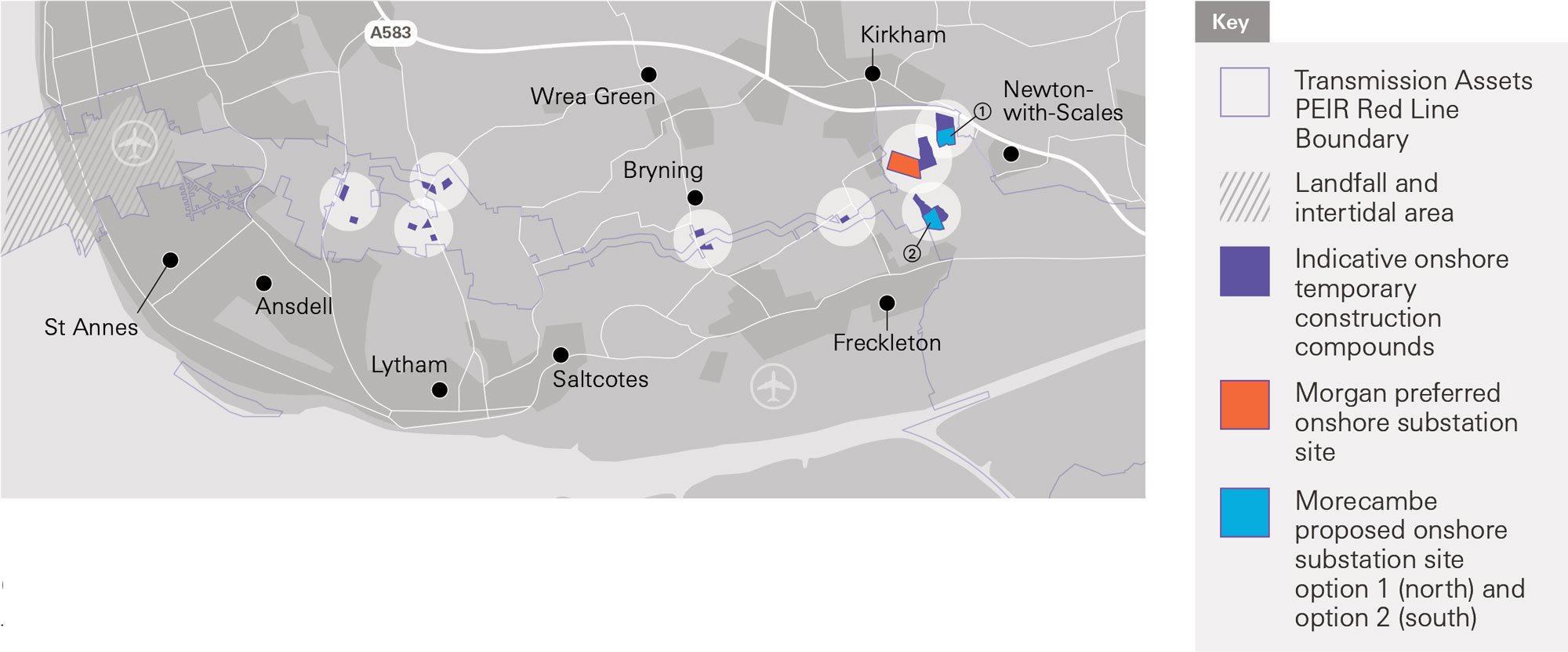Constructing the Project
Construction of the Project will involve a range of specialist engineering techniques. The main principles are outlined below.
Onshore export cables
The onshore export cable corridor for the Project will be approximately 25km in length and the cables will be buried underground. In designing the route we will consider where it is required to cross beneath existing assets, such as pipelines, highways or rivers.
Once installed, the cables will typically occupy a permanent onshore export corridor up to 70m wide, within which up to 18 onshore export cables will be installed in total for both projects. The width of the permanent corridor may change and increase in specific locations, for example where obstacles are present such as the Network Rail Crossings (where the permanent footprint may be extended up to 180m to facilitate crossing beneath the railway line) and at the approach to the landfall.
The cable installation work will be enabled by having temporary haul roads along the cable route.
Once the cables are installed, the ground will be carefully reinstated using stored subsoil and topsoil.
All temporary construction compounds and temporary fencing will be removed, field drainage and / or irrigation will be reinstated and the land will be restored to its original condition.
Hedgerows will be replanted using locally sourced native species, where practicable and with landowner agreement. Where appropriate, some enhancement (such as planting of additional suitable species) may be undertaken.

Code of Construction Practice (CoCP)
The purpose of the CoCP is to provide effective planning, management and control during construction to control potential impacts upon people, and the environment.
All construction will be undertaken in accordance with the CoCP. It will set out the key management measures that we will require our contractors to adopt and implement for all relevant construction activities for the onshore and intertidal elements of the Project.
The CoCP will include plans and control measures for managing the potential environmental effects of construction and limiting disturbance from construction activities as far as reasonably practicable.
For example, these may be related to surface water, pollution prevention, noise and vibration, air quality, and dust management.
A draft Outline CoCP is provided at Volume 1, Annex 3.1 of the PEIR.
An Outline CoCP will be prepared and submitted with the application for development consent. Detailed CoCP(s) will be developed in accordance with the Outline CoCP, and will require approval from the relevant Local Planning Authority before any relevant construction activities can take place.
View Volume 1, Annex 3.1Temporary construction compounds
Temporary construction compounds will be required to support the construction of the Project, including the onshore substations, the onshore export cable corridor, and the landfall area.
They will be prepared by removing and storing topsoil and subsoil before laying hardstanding areas using clean crushed stone.
Temporary construction compounds have been identified to support the construction of the onshore export cables. Temporary construction compounds will also be required for each of the onshore substation sites.

Onshore substations
The onshore substation buildings are likely to be composed of steel frames and external sheet cladding materials. We will be developing management plans covering ecological mitigation and biodiversity net gain.
Landfall area
The offshore export cables will be installed by HDD or other trenchless methodologies, from the transition joint bays underneath the railway line, the A584 Clifton Drive North, and the sand dunes at Lytham St Annes Site of Special Scientific Interest (“SSSI”), which is a designated site for its biology.